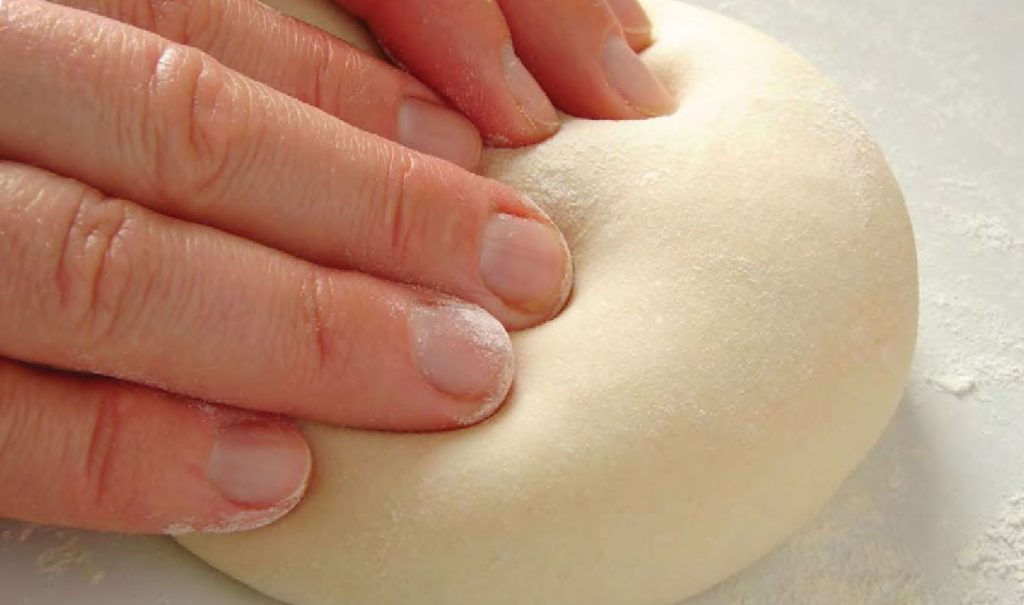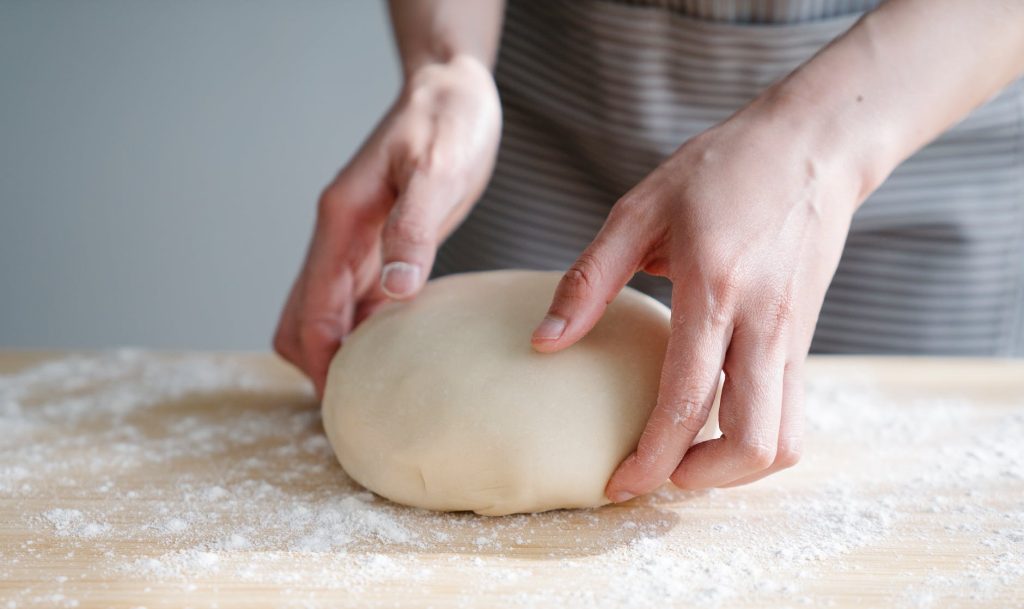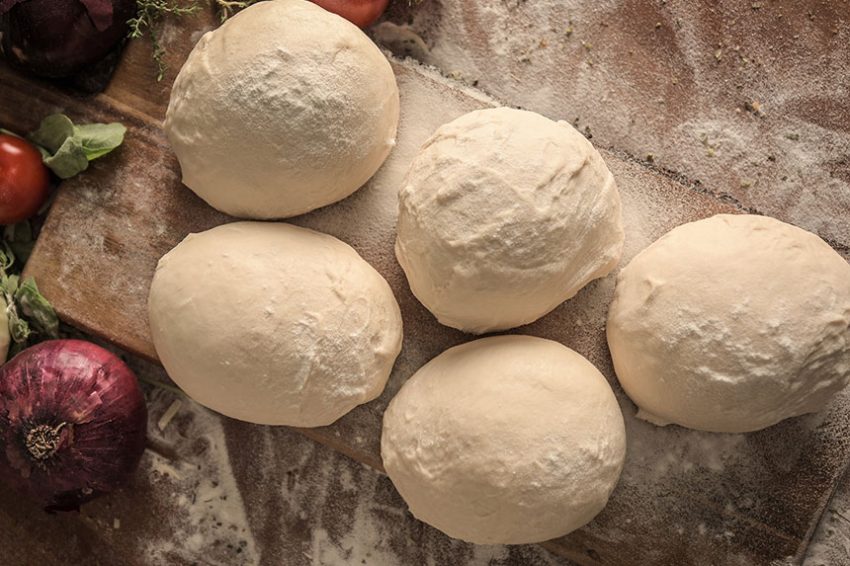Are you ready to embark on a culinary journey to create the perfect 12-inch pizza? The key to crafting that ideal pizza lies in getting the dough just right. Understanding the 12-inch pizza dough weight is the first step towards achieving a delicious, crispy crust that will leave your taste buds delighted.
However, the ideal dough weight for a 12-inch pizza ranges from 225 to 320 grams. You can also tweak this depending on how thick or thin you like your crust. Thinner crusts require less dough, whereas thicker crusts demand slightly more.
Further, the idea is to determine the dough weight that best meets your preferences and the type of pizza you want to make. It’s all about experimenting and discovering what works best for you.
Let’s explore the world of 12-inch pizza dough weight and learn how to perfect creations.
Determining Dough Quantity for a Perfect 12-Inch Pizza

Weight Calculator Apps: Utilizing specialized apps like PizzApp+ streamlines the process. These apps allow you to input the weight of your dough ball, with the app then computing the ideal amount of dough for a 12-inch pizza.
Dough Calculation: If you prefer a more manual approach, you can calculate the dough quantity yourself. Begin by knowing the weight of your dough ball, typically around 180 grams. After rising, the dough ball doubles in size, making it suitable for a 12-inch thin-crust pizza. Generally, 225 grams of dough should suffice. Note that thicker or deep-dish ones may require more.
Consider Toppings: Keep in mind that it fluctuates based on the toppings you choose. Extra-heavy toppings, such as mushrooms, will increase the overall weight. Additionally, larger ones naturally require more dough due to their increased surface area.
Pizza Dough Weight: Finding the Perfect Balance
Crafting pizza dough is a delightful art, and getting the right dough weight is crucial. While there’s no fixed recipe, you can experiment to find the ideal dough weight for your favorite pizza.
For example, a 275g dough recipe works well for a 10-inch pizza with a larger crust, while a 210g dough is perfect for a smaller crust. Experimentation is the key
To get started, use a large bowl on a scale to weigh your dough accurately. Record the amounts of each ingredient to maintain consistency.
For a typical 14-inch New York-style pizza, you’ll need around 520 grams of dough, while a hearty Chicago-style deep-dish requires about 858 grams, roughly the size of a grapefruit. The exact amount depends on your taste, allowing you to adjust its quantity to match your pizza’s size and style. Remember, smaller balls yield thinner crusts.
Moreover, good pizza dough contains high gluten content, a protein found in wheat. Gluten gives the dough structure and stretchiness, creating that desirable texture. When water is added, it forms a strong network of gluten proteins, becoming more resilient as you knead it. Once you reach the desired consistency, rolling out it becomes a breeze.
Lastly, store it in an airtight container or a covered bowl with plastic wrap. Let it rest at room temperature for about an hour or overnight. Once it’s ready, divide the dough into balls and roll each into a disc, setting the stage for a delicious pizza adventure.
Cheese and sauce quantities are also essential considerations for your 12-inch pizza:
Cheese: Typically, four to five ounces of cheese, such as shredded mozzarella, fontina, or chopped Asiago, should be ample for a 12-inch pizza. Adjust according to your preferences.
Pizza Sauce: Adding the right amount of sauce is crucial to avoid a soggy center. For a 12-inch pizza, aim for around 4 ounces of sliced fresh mozzarella or shredded mozzarella cheese. When making your own sauce, a little goes a long way, and the flavor of cooked tomatoes blends better with the other ingredients.
Mastering the Art of Baking Neapolitan Pizza Dough

Neapolitan pizza, known for its exquisite simplicity, is traditionally baked at scorching temperatures, primarily in wood-fired ovens, reaching up to twenty-four minutes for perfection. However, even in a conventional oven, the Neapolitan pizza magic can be conjured, provided you follow these essential instructions.
Dough Weight Adjustment: The size of your desired pizza determines the weight of the dough ball. For a 12-inch pizza, a single dough ball should weigh around 255 grams, or 285 grams for those who prefer a thicker crust.
Prepare the Dough: After crafting it, then divide it into smaller balls, ensuring each is covered with plastic wrap to prevent sticking. On a lightly floured surface, brush the dough lightly with olive oil. Besides, things to remember, using wildfarmed flour is far better for preparing dough and is good for health as well.
The Oven Process: Place it in the oven, but not before ensuring it’s adequately preheated. Ideally, the dough should experience a temperature of at least 20 degrees Celsius (68 degrees Fahrenheit), creating the perfect environment for it to rise.
The Right Tools: Whether you’re making your dough or buying it, a stand mixer with an automatic kneading function is a valuable tool. It simplifies preparation process, making it more manageable.
Time to Rest and Toppings: Once it has had its time to rest, typically around 30 minutes, you’re ready to embark on the final steps. Gently stretch it, then generously adorn it with your favorite toppings, allowing your creativity to flourish.
| Pizza Style | Pizza Size (inches) | Dough Weight (grams) | Dough Weight (ounces) |
| Thin Crust | 12 | 225 | 8 ounces |
| Traditional Hand-Tossed | 12 | 255 | 9 ounces |
| Thick Crust | 12 | 285 | 10 ounces |
| Thick Crust Pan Pizza | 12 | 320 | 11.3 ounces |
| Detroit Style | 12 | 350 | 12.3 ounces |
FAQs
What is Baker’s Percentage, and Why Should I Use it?
Baker’s Percentage, also known as baker’s math, expresses a pizza dough recipe in terms of the weight of each ingredient relative to the weight of flour. This method is standard in commercial bakeries to ensure consistency and helps when adapting recipes for different batch sizes.
Why Do We Use Grams As A Measure Of Pizza Dough Weight?
Grams are preferred for measuring pizza dough weight because they offer simplicity and precision. They avoid fractions, are easy to scale, and are compatible with most home baking scales. Furthermore, the metric system is commonly used worldwide, making it a practical choice.
How Do Various Pizza Crust Styles Vary in Thickness?
Pizza crust thickness varies between styles, with New York-style being very thin (about 1/8″), Chicago and Sicilian styles thick (about 1/4″), and Neapolitan slightly thicker than New York style. Thin crust requires about 25% less dough than thick crust, while pan pizza is approximately 50% thicker.
What is the Pizza Dough Weight to Achieve My Desired Pizza Style?
The amount of dough needed depends on the pizza size and crust style you want. Calculations are based on the surface area formula. For a 12″ thin crust pizza, you would need approximately 221.25 grams of dough. Use the provided chart to find doughball weights for various pizza sizes and styles.
How Can I Adjust the Recipe to Make More or Less Dough?
To adjust the recipe for different quantities or styles, use the baker’s percentages and a finished dough calculator. This method is more precise than simply doubling the recipe and ensures you have the right dough consistency. Enter the percentages for each ingredient and the total dough weight you need, and the calculator will do the math for you.
How long should I bake pizza?
The baking time depends on your pizza style and oven temperature. On average, it takes 12 to 15 minutes to bake pizza at 500°F. The lower the temperature, the longer it will take.
What kind of yeast should I use for pizza?
You can use fresh, instant, or active dry yeast to make pizza dough. The type of yeast you use will affect the quantity required. Active dry yeast is a popular choice for pizza dough and is recommended for consistent results.
What is the best flour for pizza?
The best flour for pizza is one with a high protein content. Caputo Chef’s Flour is suitable for home ovens, while Caputo Pizzeria works well in high-temperature ovens. The choice of flour can affect the texture and flavor of your pizza. For more information, see the “Best Flour for Pizza” article.
How much pizza is in a 12 inch?
A 12-inch pizza typically has about eight slices.
How much dough for a 12 inch thick crust pizza?
For a 12-inch thick crust pizza, you would need approximately 220-275 grams of dough, depending on the crust style.
How many pizzas does 1 kg of flour make?
The number of pizzas one kilogram (1 kg) of flour can make depends on the size of the pizzas and the crust thickness. For a 12-inch pizza, it would be around 3-4 pizzas.
How many grams of cheese for a 12-inch pizza?
The amount of cheese for a 12-inch pizza can vary depending on your preference, but typically, you might use about 150-200 grams of cheese.
Is 12-inch pizza enough for two?
Whether a 12-inch pizza is enough for two people depends on their appetites, but it can certainly serve as a satisfying meal for a couple.
Final Words
In conclusion, understanding the ideal 12-inch pizza dough weight is a crucial aspect of pizza making. It serves as the foundation for achieving the perfect crust thickness and style tailored to your preferences. While the recommended range typically falls between 225 and 320 grams, flexibility is key.
Further, it can be adjusted to match the specific type of pizza you wish to create, whether it’s a thin, crispy crust or a thick, hearty one. The art of pizza making is all about experimentation, allowing you to discover the perfect dough weight that satisfies your taste buds.
So, go ahead, get creative, and craft the pizza of your dreams with the ideal dough weight in mind. Happy pizza making!

